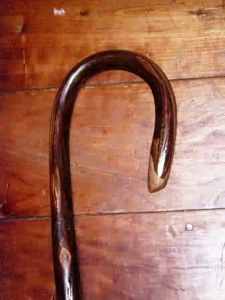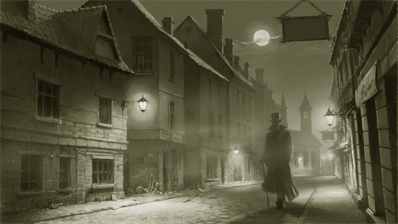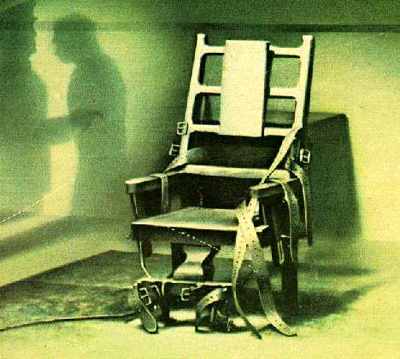 Music
Music  Music
Music  History
History 10 Less Than Jolly Events That Occurred on December 25
 Weird Stuff
Weird Stuff 10 Funny Ways That Researchers Overthink Christmas
 Politics
Politics 10 Political Scandals That Sent Crowds Into the Streets
 Weird Stuff
Weird Stuff Ten Bizarre Facts About The Doge Meme
 Our World
Our World 10 Ways Your Christmas Tree Is More Lit Than You Think
 Movies and TV
Movies and TV The 10 Coolest Stars to Set Sail on The Love Boat
 History
History 10 Things You Didn’t Know About the American National Anthem
 Technology
Technology Top 10 Everyday Tech Buzzwords That Hide a Darker Past
 Humans
Humans 10 Everyday Human Behaviors That Are Actually Survival Instincts
 Music
Music 10 Surprising Origin Stories of Your Favorite Holiday Songs
 History
History 10 Less Than Jolly Events That Occurred on December 25
 Weird Stuff
Weird Stuff 10 Funny Ways That Researchers Overthink Christmas
Who's Behind Listverse?

Jamie Frater
Head Editor
Jamie founded Listverse due to an insatiable desire to share fascinating, obscure, and bizarre facts. He has been a guest speaker on numerous national radio and television stations and is a five time published author.
More About Us Politics
Politics 10 Political Scandals That Sent Crowds Into the Streets
 Weird Stuff
Weird Stuff Ten Bizarre Facts About The Doge Meme
 Our World
Our World 10 Ways Your Christmas Tree Is More Lit Than You Think
 Movies and TV
Movies and TV The 10 Coolest Stars to Set Sail on The Love Boat
 History
History 10 Things You Didn’t Know About the American National Anthem
 Technology
Technology Top 10 Everyday Tech Buzzwords That Hide a Darker Past
 Humans
Humans 10 Everyday Human Behaviors That Are Actually Survival Instincts
10 Creepy Murders in Old New York
New York City, one of the most famous cities in the world, has a reputation—deserved or not—for violence. Certainly, the Big Apple has experienced its share of criminals and crime (including the hideous crime against human decency that is Donald Trump’s combover). Here are ten of the more gruesome murders in New York, pre-1905.

Let’s set the scene: Cries and the sounds of a struggle come from a room at the top floor of a Hester Street tenement. A man in a soft felt hat is seen leaving in a hurry. Alarmed neighbors enter the room and find Frank Paulsen horribly murdered.
The sexagenarian victim had been attacked with a meat cleaver or axe, leaving deep head wounds that exposed bone. The room was painted with blood, but amazingly, Paulson was still alive. By the time police officers summoned an ambulance, however, he succumbed to his injuries and died. Unlike an episode of Colombo, he didn’t manage to gasp out a clue with his last breath. Investigators found a defensive wound on his right hand, a cut presumably delivered by the murder weapon, and he clutched a lock of hair so blood soaked, its color couldn’t be determined. This sole piece of evidence would prove useless.
A man fitting the description of the person seen hurrying from the crime scene was arrested by police in the Bowery, but since his clothes didn’t have a speck of blood on them, he was released. Further investigation turned up Frank Roehl, who admitted killing Paulsen, but claimed the victim had attacked him and he’d used a hatchet in self defense. The jury thought otherwise, and convicted him of murder.
BONUS FACT: During the trial, the district attorney narrowly avoided injury when Roehl attacked him during cross examination.

Let’s set the scene: A comfortable middle class home on Palmetto Court in Brooklyn. Mr. and Mrs. Jones linger over their meal, while the hired nurse takes care of their eighteen-month-old baby boy. Later, poor Mrs. Jones enters the kitchen and makes a horrific discovery.
While the Jones’ were enjoying post-dinner piano playing in the parlor, Alice O’Donnell—twenty eight years old, a nurse recently hired to take care of their infant son—calmly took a straight razor from the husband’s dresser, cut the baby’s throat from ear to ear, changed her clothes, and left. At eleven o’clock, Mrs. Jones walked into the kitchen and found her son’s body where Alice had abandoned it on the floor, the little corpse pale and stiff in a pool of blood. The police were immediately summoned.
Alice O’Donnell was arrested at her home on North Portland Avenue. When confronted by police, she admitted to the murder and expressed no remorse. Her motive? Unknown. She said she’d killed the baby on impulse. While I haven’t been able to determine Alice’s ultimate fate, detectives at the time speculated that she was insane, although the dead child’s parents insisted she had been in her right mind and lucid at the time of the murder.
BONUS FACT: Mrs. Jones believed that Alice, who had been forced to give up a newborn baby eight months previous, cold-bloodedly murdered her baby out of jealousy.

Let’s set the scene: From the sub-cellar of the Hotel Empire in the infamous Tenderloin red-light district, a ghastly stench begins to rise, distressing the guests. Police discover the source of the smell: a human head smoldering in the furnace.
Police were first tipped off by a witness, who said he’d seen ex-convict Thomas Tobin drag an unconscious James “Captain Jim” Craft downstairs. The reek of burning flesh coming from the basement drew investigators to break down the door. A few buckets of water put out the fire in the furnace, and a round, blackened object resembling a barbecued soccer ball was scraped out of the embers. It was a human head with most of the hair and flesh burned off. The bloody murder weapon—a meat cleaver—and the rest of the body lay nearby. The victim was naked and almost split in half due to a massive, deep gash running across his chest.
Tobin was arrested immediately – his clothes still covered in blood. He had killed Craft to steal $50. Despite attempting an insanity plea (he had spent time in the past in Matteawan Hospital for the Criminally Insane) he was judged sane, convicted of murder, and sentenced to death.
BONUS FACT: After finding out how difficult it was to cut up and dispose of his victim’s body, Tobin decided to prevent identification by decapitating Craft and burning the head. He didn’t know he’d been seen by a witness, who saw the whole horrible thing.

Let’s set the scene: Three boys walk through the woods near picturesque Silver Lake, Staten Island. One trips on a barrel stave protruding from the ground. When they dig up the carpet wrapped barrel and open it, to their horror they discover not treasure, but the ghastly, stinking, decomposing remains of a young woman.
The victim’s face was unrecognizable since the killer had sprinkled quicklime over her body after shattering her skull with a blunt instrument and stuffing her in the barrel. The coroner discovered she’d been pregnant when she died. After about a month, efforts to identify the victim finally led investigators to suspect Edward Reinhardt, whose wife, Mary Ann Degnan, was missing. The couple had quarreled, and Reinhardt was known to have a violent temper. In addition, a couple of days following Mary Ann’s disappearance, Reinhardt told neighbors she’d gone to Newark. Not long afterward, he married another woman.
The defense tried to get the murder case dismissed on the grounds that the body couldn’t be positively identified, but that argument went over like a ham sandwich at a vegan picnic. During the trial, Reinhardt finally confessed, admitting he’d struck Mary Ann on the head with a hammer during an argument. Later, he recanted, claiming she’d actually died from medicine she’d taken for dropsy (edema), and he’d only buried the body to avoid trouble with the police. The jury didn’t buy this story either. He died on the gallows.
BONUS FACT: Originally, police suspected the victim might be Annie Hommel, another missing girl who’d broken her wrist as a child. To test the theory, the body was dug up from a pauper’s grave. The coroner removed both the arms and boiled off the flesh in a cauldron right in the cemetery to examine the bones. Turned out it wasn’t her after all.

Let’s set the scene: A bartender at a dance saloon on Thompson Street in the vice ridden district known as Satan’s Circus goes into the rear yard. Inside the “water closet”—an outdoor toilet—he discovers a shockingly large pool of clotting blood and a straight razor lying open on the floor. What he doesn’t find is the victim’s body.
Shortly after the horrified bartender summoned the police, more investigators were called to a room close by on Broome Street where a woman’s corpse lay huddled in blankets on the bed. Mary Jane Sullivan, a prostitute, had been beaten to death with a hickory walking cane. The murderer struck her so savagely that the cane broke (and hickory is a very hard indeed). The only cut on her body was a thin slice over her left eye..
At first, police weren’t sure if the murder was related to the blood found at the dance saloon, but Mary Jane was known to frequent the dance saloon. How had she hemorrhaged from such a small wound? It was a question that wouldn’t have fazed Jessica Fletcher, but NYC police found it baffling. Soon the picture became clearer. Mary Jane had lived with two other women, also prostitutes, under the “protection” of James Jackson, a kalsominer (whitewash painter), part-time pimp, and known ruffian. In the early hours of the morning before Mary Jane’s body was found, witnesses saw Jackson beating her on a street corner.
Police reckoned a drunken Jackson had caught Mary Jane freelancing in the dance saloon’s water closet. He cut her customer with his razor—hence the blood—and dragged her home to finish her off. Within a couple of days after the murder, Jackson took $200 from his bank account and fled the city for Philadelphia. His fate remains unknown.

Let’s set the scene: A Manhattan railroad depot. A busy porter loading baggage onto a Chicago-bound train. A trunk that reeks of death so strongly that the station master orders it opened. The awful stench is caused by a young woman’s body—pretty and blonde no more.
The discovery kicked off the “Great Trunk Mystery.” Subsequent police investigation revealed the victim had died of an infection caused by a botched abortion. Worse, it appeared she’d been stuffed into the trunk while still alive. When a certain Second Avenue address was identified by the delivery man who had picked up the trunk, police arrested the resident, Jacob Rosenzweig, an abortionist who’d bought his medical degree from a diploma mill.
The unidentified body in an advanced stage of decomposition was put on public display like the world’s most stomach-churning performance art piece. Hundreds of gawkers flocked to view the putrid remains. Alice Augusta Bowlsby, a New Jersey girl, was eventually identified by her family’s doctor and dentist, and Rosenzweig was tried and convicted.
BONUS FACT: Alice’s lover, Walter Conklin, presumably her baby’s daddy, committed suicide by shooting himself when he learned of her death.

Let’s set the scene: Christmas night. Fire engulfs a wooden house in a Staten Island neighborhood. The flames are beaten back by neighbors and relatives who live close by. Two bodies are discovered in the ashes: a mother and her baby, not burned but brutally slain.
The stage is set for one of America’s most infamous murder cases, which in its day was more sensational than Lizzie Borden’s shenanigans with an axe. Both Emeline Van Pelt Houseman, wife of George Houseman (who wasn’t home that night), and her twenty month old daughter suffered crushed skulls, broken bones, and in the mother’s case, a slit throat before the house was deliberately torched by their killer.
Police suspected Polly Houseman Bodine, Emeline’s sister-in-law. Certainly, Polly was no angel. A married woman with teenage children, she’d left her husband to live in sin with an apothecary, George Waite. She drank. She lived across the street from her brother’s place. And according to witnesses, she’d not only lied about Emeline going out of town that day, she lied about her own whereabouts as well.
However, it wasn’t a slam dunk prosecution. Polly seemed to have no motive for a gore-fest that would have done Jason Voorhees proud. Witnesses changed their statements or were refuted by the defense. The first trial ended in a hung jury. The second trial in a conviction – later overturned by the State Supreme Court. The third trial saw Polly finally acquitted. The murder of Emeline Houseman and her baby remains unsolved.
BONUS FACT: George Houseman, Emeline’s husband, was quoted as saying, “I can get another wife. I can get another child. I can never get another sister.” Nice guy, huh?

Let’s set the scene: Manhattan’s waterfront, the East River Hotel. The walls, floor, and furniture in Room 31 is soaked in blood. The body of a known prostitute, Carrie “Old Shakespeare” Brown, is discovered strangled, stabbed, and hideously mutilated. The killer had attempted to gut her with a knife found by police at the scene.
Occurring just a few years after the infamous Jack the Ripper killings in London, the city’s sensation-seeking newspapers immediately pointed out the similarity between Brown’s murder and the Whitechapel killings. Headlines screamed, “Jack the Ripper in America!”
The police didn’t agree. They arrested Ameer Bin Ali, an Algerian who had been staying in Room 33, just across the hall from the crime scene. Although witnesses couldn’t identify him as the man who had been spotted with Brown earlier that evening, investigators claimed to have found blood on the door and doorknob of his room.
Without witnesses to the crime, the prosecution’s case hung on the blood evidence. However, at this time, it was impossible to tell with certainty if the blood belonged to the victim. In fact, whether the blood even belonged to a woman or a Xenu was anybody’s guess. Nevertheless, the jury convicted Ameer of second degree murder, probably because he was a French-speaking foreigner. He spent eleven years in Sing-Sing before his conviction was overturned, when it was learned that police had tampered with … yep, the blood evidence. Carrie Brown’s murder remains unsolved.
BONUS FACT: More recently, the dreadful murder of Carrie Brown has been linked to some Jack the Ripper suspects including George Chapman and Francis Tumblety.

Let’s set the scene: A tailor’s clerk prepares to open the shop at 378 Broadway early in the morning. He finds blood on the door handle. A policeman is summoned to kick in the door, revealing the naked body of Bartholomew Burke and a scene awash in gore.
Burke, an unmarried porter who’d worked in the shop for several years and slept there in the evenings, was found murdered with such horrific violence, Tarantino would take a step back and say, “Whoa.” It was clear to investigators that Burke had struggled with his killer, as evidenced by the gory pair of oversized shears and other bloody objects close at hand. A peculiar, blood clotted short sword had been used to savagely cut Burke’s throat and mutilate his body in a frenzied attack. A bloody hammer had left a visible dent in his forehead.
Police determined the killer had stabbed Burke to death, coolly washed his hands (not very well), and left the shop, locking the door and pocketing the key. A blood trail left behind led nowhere. No witnesses. No clues. Nothing belonging to the tailor’s shop or to Burke had been stolen, although his personal effects had been searched by person(s) unknown.
Police were baffled. Attempts to trace the sword failed. Lacking a suspect or a motive, the murder of Bartholomew Burke remains unsolved.
BONUS FACT: Despite the evidence of a knock down, drag out fight taking place between Burke and his murderer, the family who slept upstairs didn’t hear a thing.

Let’s set the scene: Half a human torso, wrapped in a package, is found by a couple of boys swimming in the East River. A parcel containing two adult male legs is found floating in the Navy Yard. As days pass, horrified citizens discover a severed human thigh wrapped in burlap; more of the trunk, a foot, and a pelvis in the woods at 176th Street; and other dismembered body parts scattered across Brooklyn, Harlem, and the Bronx … the only thing missing was a head.
The murder victim was William Guldensuppe, a “rubber” by trade (quit snickering, Beevis, it’s old fashioned slang for a masseur), who had been murdered and hacked to pieces. In the sort of unbelievable coincidence that wouldn’t pass muster on a bad CSI episode, a New York Journal reporter sent to view the remains for a story recognized the victim. Furthermore, he traced a distinctly patterned oilcloth used to wrap some of the body parts to the woman who had purchased it—Augusta Nack, Guldensuppe’s former lover.
After breaking up with Guldensuppe, Augusta wasted no time taking up with a new boy toy, Martin Thorn. The jealous man confessed to a friend that he’d killed Guldensuppe in the house he shared with Augusta in Queens because the victim wouldn’t stop macking on his honey. The friend alerted the police. Thorn was found guilty and executed by electric chair in Sing-Sing on August 1, 1898. Augusta turned state’s evidence and did ten years in jail.
BONUS FACT: Though some newspapers of the time dubbed him a Dutchman—likely a corruption of “Deutsch”—Guldensuppe was, in fact, born in Germany.
New York’s streets are allegedly safer these days. Crime rates have steadily dropped in the last ten years. However, I suspect that as long as people live in NYC, they’ll continue to perpetrate acts of dismemberment, defenestration, disembowelment, and other violence on each other. It’s the city that never sleeps … probably because of all the screaming.








